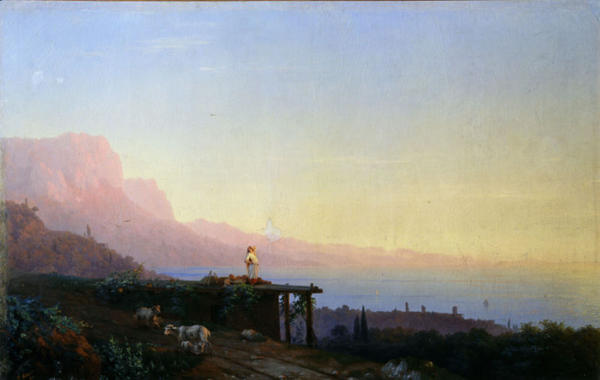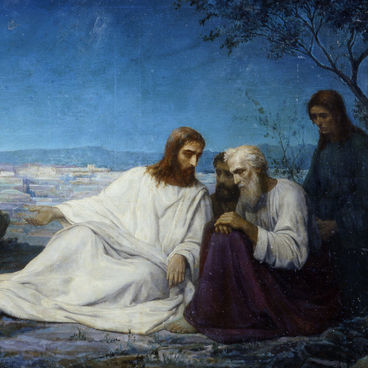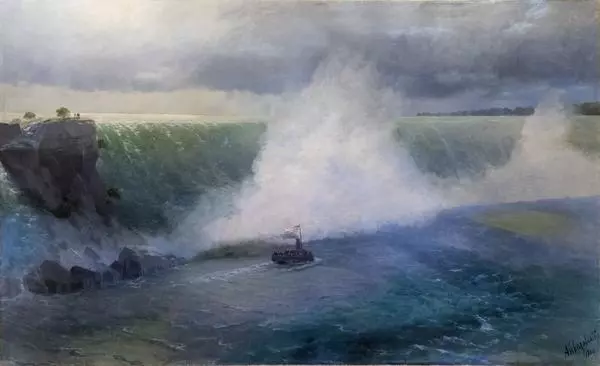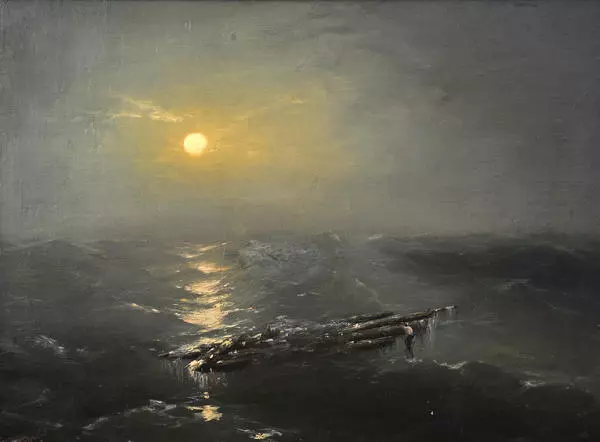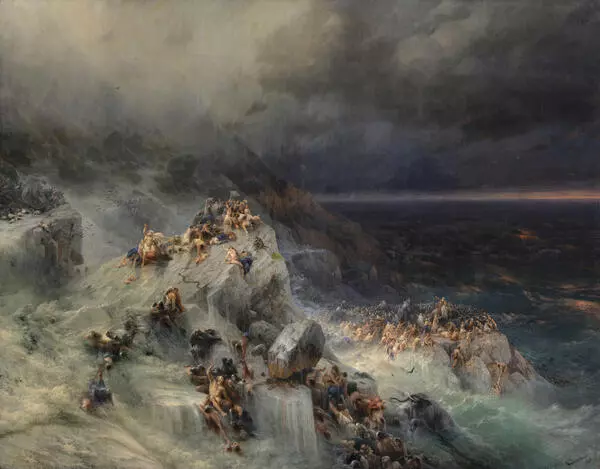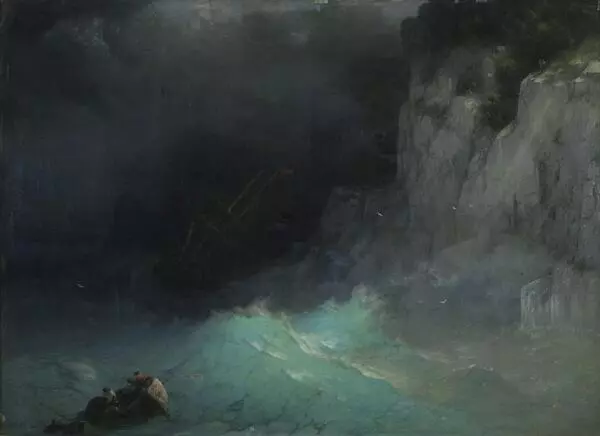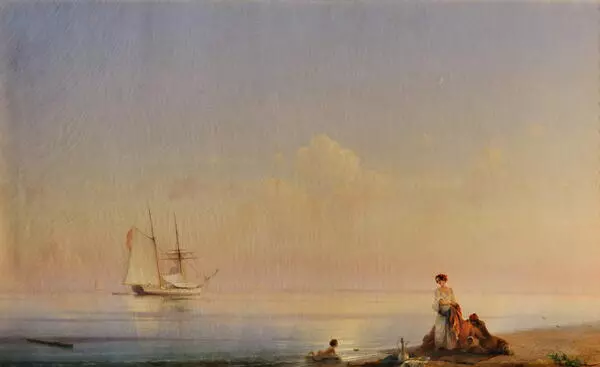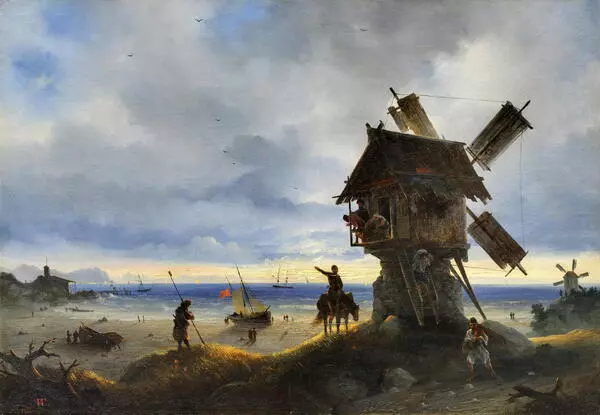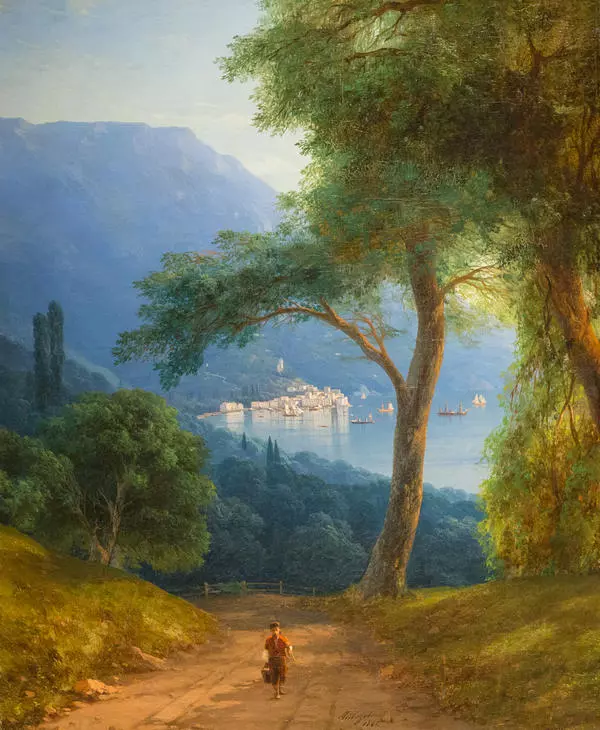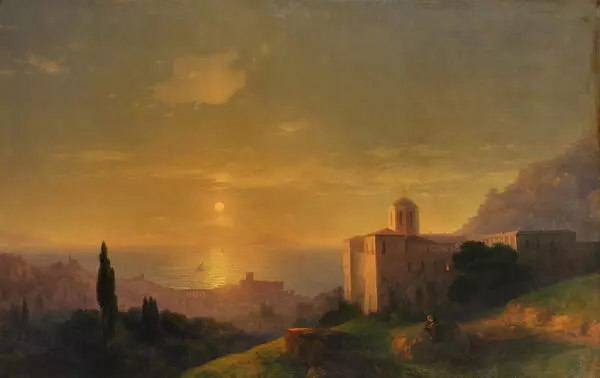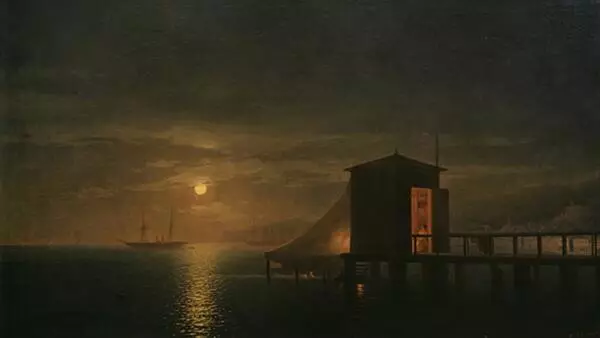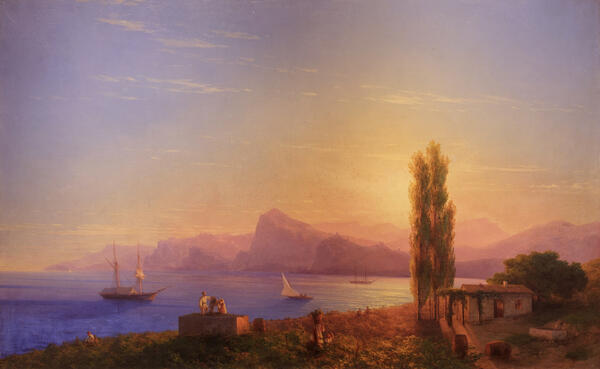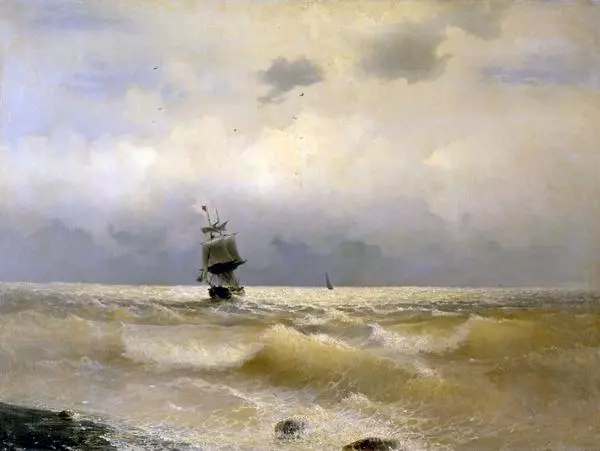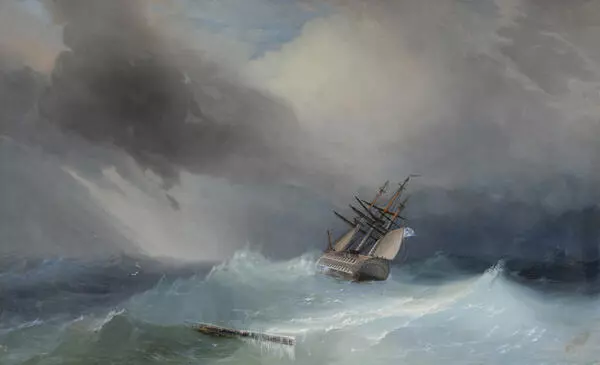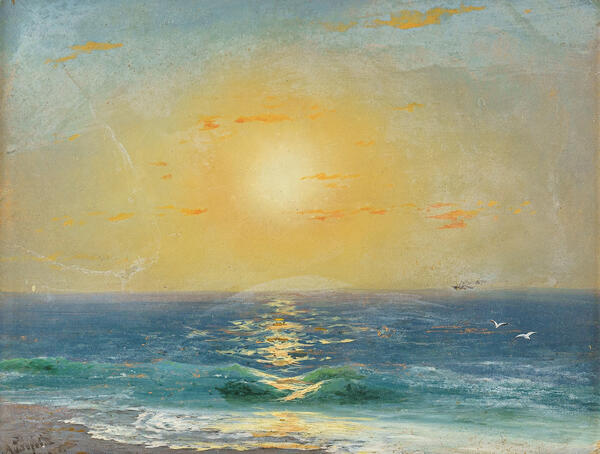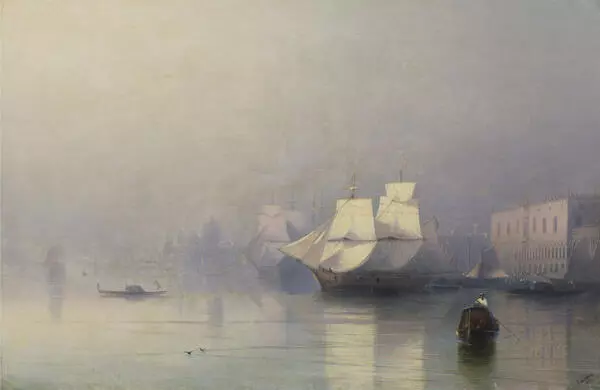Painter Ivan Aivazovsky captured the grandiose and majestic sea on his tableaus. He graduated from the Imperial Academy of Arts, two years ahead of the designated deadline. The Academy itself made a decision about his early graduation because it was stated that the professors were unable to teach the talented youngster anything new. After graduation, Aivazovsky was sent on a two-year journey to the Crimea to do some independent work, and then on a European tour to improve his skills for a few years.
The exhibition has A Night in the South. The Crimea on display, which dates to the artist’s early period. At the time, the painter was attracted by a quiet sea, and was interested in lighting effects at the dawn and sunset. The picture features a romantic Crimean landscape: The sea and the mountains are lit by a soft light. The canvas is constructed according to the laws of Academism, with the two grounds clearly outlined: The painter was a diligent student of the seascape canons. The foreground depicts a dark seashore, a road with cart tracks, and the mirror-like water surface occupies the center of the painting. The horizon is enveloped into a light haze, the mountains seem to be dissolved in the humid air, with sea waves splashing at their feet. The artist introduced staffage figures into the composition. Staffage are the human and animal figures depicted in a scene to add interest. The canvas belonged to Emperor Alexander III, and used to stay at the Anichkov Palace in St. Petersburg.
Besides seascapes, Aivazovsky painted vast expanses of Ukraine and the nature of the Caucasus. His range of interests was broad, and he also created tableaus based on mythological and religious subjects, and painted portraits. The sea, however, always remained the main motif in his oeuvre: His seascapes were widely acclaimed and enjoyed popularity with the public. His career was a success, and for 60 years, Aivazovsky was the country’s leading marine artist.
The exhibition has A Night in the South. The Crimea on display, which dates to the artist’s early period. At the time, the painter was attracted by a quiet sea, and was interested in lighting effects at the dawn and sunset. The picture features a romantic Crimean landscape: The sea and the mountains are lit by a soft light. The canvas is constructed according to the laws of Academism, with the two grounds clearly outlined: The painter was a diligent student of the seascape canons. The foreground depicts a dark seashore, a road with cart tracks, and the mirror-like water surface occupies the center of the painting. The horizon is enveloped into a light haze, the mountains seem to be dissolved in the humid air, with sea waves splashing at their feet. The artist introduced staffage figures into the composition. Staffage are the human and animal figures depicted in a scene to add interest. The canvas belonged to Emperor Alexander III, and used to stay at the Anichkov Palace in St. Petersburg.
Besides seascapes, Aivazovsky painted vast expanses of Ukraine and the nature of the Caucasus. His range of interests was broad, and he also created tableaus based on mythological and religious subjects, and painted portraits. The sea, however, always remained the main motif in his oeuvre: His seascapes were widely acclaimed and enjoyed popularity with the public. His career was a success, and for 60 years, Aivazovsky was the country’s leading marine artist.

